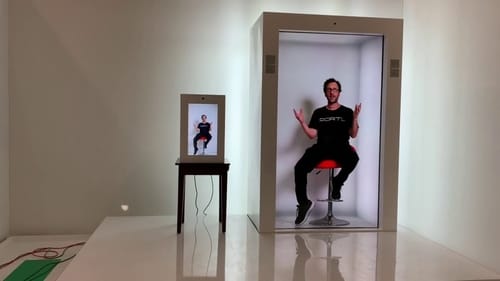 |
| PORTL brings real-time holograms to your home |
Los Angeles-based PORTL has developed a phone booth-sized device that can read holograms in real time in your living room to communicate in new ways during the pandemic.
The device allows users to speak to other people holograms in real time.
The machine could also be equipped with technology for recording live holograms of deceased historical figures or relatives.
The PORTL device is 2.1 meters long, 1.5 meters wide and 0.6 meters deep.
The device can be plugged into a standard wall outlet, and anyone with a camera and a white background can send 3D images to the device.
"If there is no truth, you can go digital," said David Nussbaum, the company's chief executive. He developed Ronald Reagan 3D for the old presidential library in a company. A picture of the company's work.
Nussbaum added: We can connect families to soldiers they haven't seen in months, or people who live on the opposite coast, or with someone in the community fighting the Coronavirus.
PORTL devices start at $ 60,000, and Nussbaum expects the cost to decrease over the next five years.
The company also plans to develop a smaller, cheaper laptop computer early next year.
These devices can be equipped with Los Angeles AI (StoryFile) technology to create 3D images that can be archived.
The cost to add this feature to your (PORTL) devices is at least $ 25,000.
The two companies are promoting the device in museums so that visitors can ask questions about 3D images of historical figures and families to record information for posterity.
"People can feel as though they are talking using a recorded hologram," said Heather Smith, CEO of StoryFile.
She added: You feel their presence, you see their body language, you see all the nonverbal signals, and even when you are not there, you still feel as if you are actually talking to that person.
According to reports, holograms, or holograms, are an imaging technique that records the light emitted by an object and then exposes it to show the three dimensions of the object.
